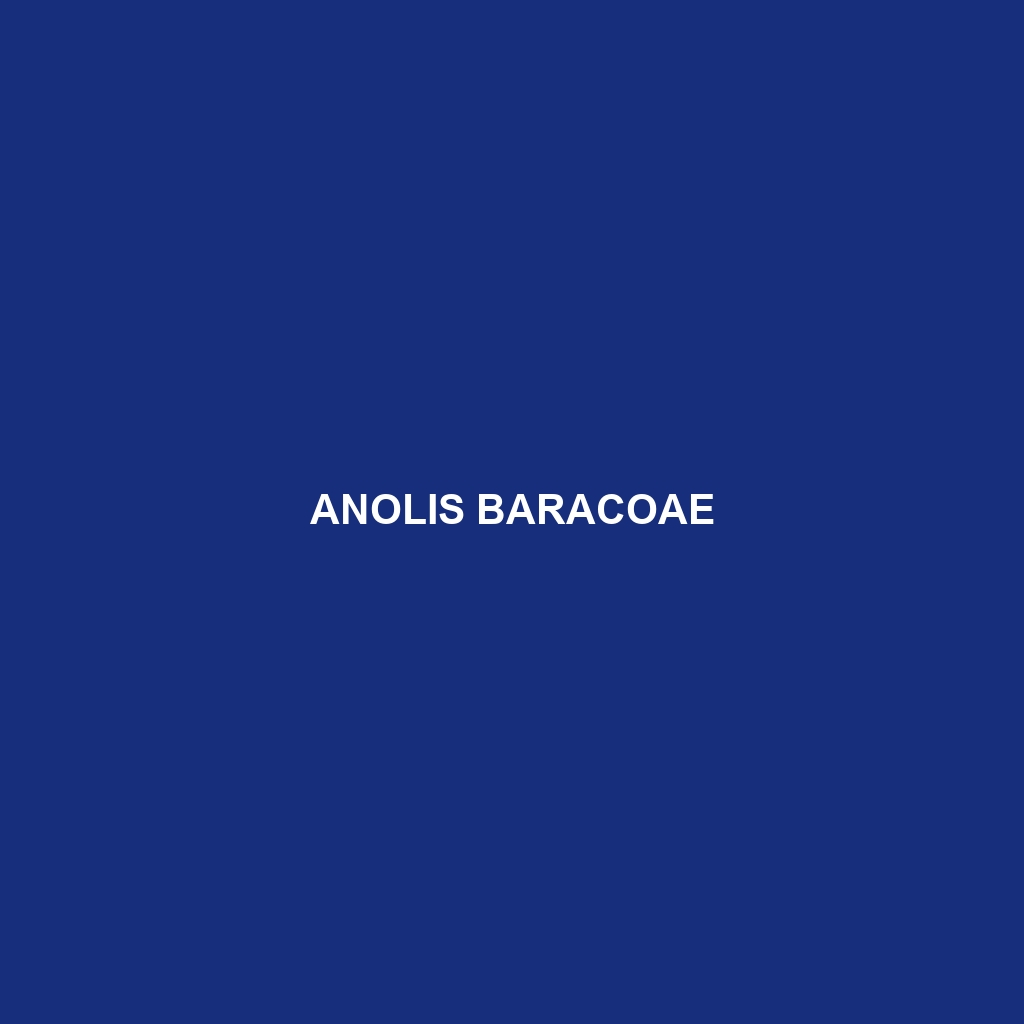Anolis baracoae – Species Description
Common Name: Anolis baracoae
Scientific Name: Anolis baracoae
Habitat
Anolis baracoae is primarily found in the lush forests of the Caribbean, particularly on the island of Cuba. This species typically inhabits humid montane and lowland forests, where it prefers areas with ample vegetation and tree cover. These environments provide the necessary climbing surfaces and microhabitats essential for its survival.
Physical Characteristics
Anolis baracoae is a medium-sized lizard, typically measuring about 12 to 15 centimeters in total length. Its coloration ranges from vibrant green to brown, allowing it to blend seamlessly into its arboreal surroundings. This species has a distinctive dewlap, which is often used in displays related to courtship and territorial behaviors. Its elongated body and long, slender toes facilitate climbing and navigating through its leafy habitat.
Behavior
This species exhibits fascinating behaviors, primarily arboreal in nature. Anolis baracoae is diurnal, meaning it is active during the daytime. It engages in various social displays, especially during the mating season, where males use their colorful dewlaps to attract females and ward off rivals. The lizard’s ability to change color in response to environmental factors plays a crucial role in thermoregulation and camouflage.
Diet
Anolis baracoae primarily feeds on small insects, such as caterpillars, beetles, and ants, showcasing its role as a predator in its ecosystem. Its diet can be categorized as insectivorous; it hunts by actively foraging among leaves and branches, utilizing its keen eyesight to spot prey at a distance.
Reproduction
The reproductive habits of Anolis baracoae are characterized by a spring breeding season. During this time, males engage in elaborate courtship displays, using their dewlaps to attract females. After mating, the female lays two to three eggs in a hidden location within the leaf litter or crevices of tree bark. The eggs typically hatch after several weeks, with hatchlings being independent from birth.
Conservation Status
Anolis baracoae is currently assessed as Vulnerable by the International Union for Conservation of Nature (IUCN). Habitat loss due to deforestation and urban development poses significant threats to its population. Conservation efforts are critical to preserving its natural habitats and ensuring the species’ survival.
Interesting Facts
One fascinating aspect of Anolis baracoae is its remarkable ability to regenerate its tail after losing it to predators. This regenerative capability not only aids in survival but also demonstrates remarkable adaptiveness in an often predatory environment. Additionally, some studies suggest that Anolis baracoae has a relatively long lifespan for a small lizard, living up to 5 years in the wild.
Role in Ecosystem
Anolis baracoae plays a vital role in its ecosystem as both a predator and prey. By controlling insect populations through its diet, it contributes to the ecological balance in its habitat. Additionally, it serves as a food source for larger predators, thereby helping to maintain the food web dynamics in its rainforest environment.
